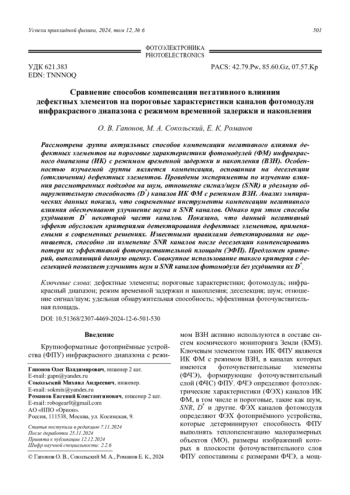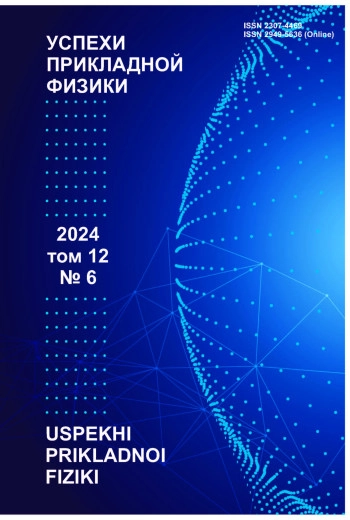Рассмотрена группа актуальных способов компенсации негативного влияния дефектных элементов на пороговые характеристики фотомодулей (ФМ) инфракрасного диапазона (ИК) с режимом временной задержки и накопления (ВЗН). Особенностью изучаемой группы является компенсация, основанная на деселекции (отключении) дефектных элементов. Проведены эксперименты по изучению влияния рассмотренных подходов на шум, отношение сигнал/шум (SNR) и удельную обнаружительную способность (D*) каналов ИК ФМ с режимом ВЗН. Анализ эмпирических данных показал, что современные инструменты компенсации негативного влияния обеспечивают улучшение шума и SNR каналов. Однако при этом способы ухудшают D* некоторой части каналов. Показано, что данный негативный эффект обусловлен критериями детектирования дефектных элементов, применяемыми в современных решениях. Известными правилами детектирования не оценивается, способно ли изменение SNR каналов после деселекции компенсировать потери их эффективной фоточувствительной площади (ЭФП). Предложен критерий, выполняющий данную оценку. Совокупное использование такого критерия с деселекцией позволяет улучшить шум и SNR каналов фотомодуля без ухудшения их D*.
A group of relevant methods for compensating the negative effect of defective photosensitive elements (PSE) on the basic photovoltaic parameters of channels in the infrared (IR) focal
plane array (FPA) with a time delay integration (TDI) mode is considered. A special feature of the studied group is compensation based on the deselection (disconnection) of defective PSEs. Experiments have been conducted to study the effect of the considered approaches on noise, signal-to-noise ratio (SNR) and specific detectivity (D*) of channels in the IR FPA with a TDI mode. An analysis of empirical data has shown that modern tools for compensating for negative effects provide improved noise and the SNR of channels. However, in this case, the methods worsen the D* of some of the channels. It is shown that this negative effect is due to the criteria for detecting defective PSEs used in modern solutions.
The known detection rules do not assess whether a change in the SNR of channels after deselection is capable of compensating for the loss of their area of the photosensitive region.
A criterion is proposed that performs this assessment. The combined use of such a criterion with deselection makes it possible to improve the noise and SNR of channels without compromising their D*.
Идентификаторы и классификаторы
- SCI
- Физика
- Префикс DOI
- 10.51368/2307-4469-2024-12-6-501-530






